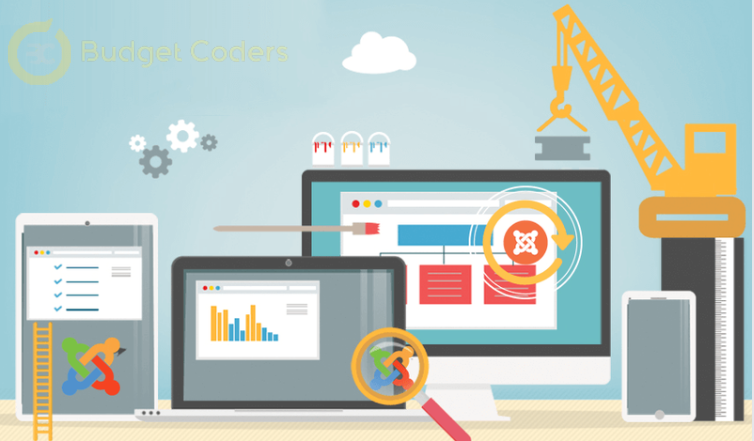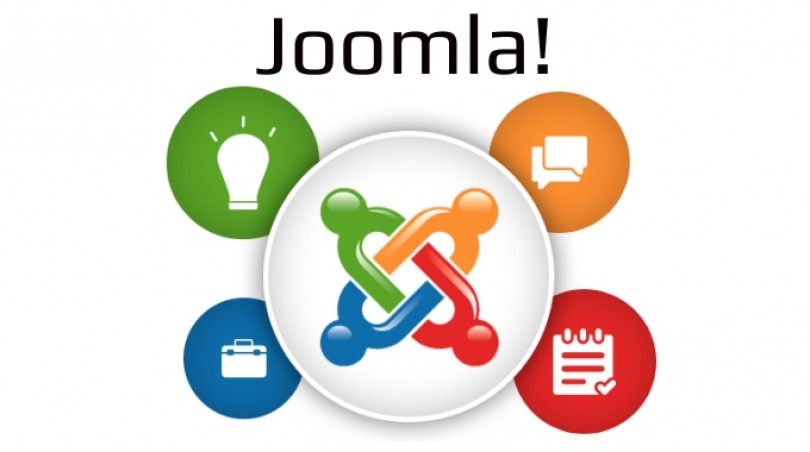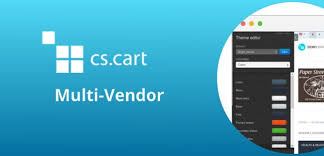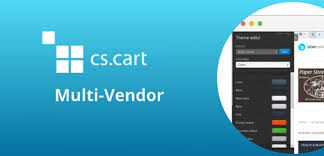Looking to create a website or blog but don’t know where to start? Consider Joomla, the popular PHP-powered content management system (CMS). In this comprehensive guide, you’ll learn all about what Joomla is, what features it offers, and how to use it for your own website. Plus, we’ll discuss some of the pros and cons of using Joomla CMS and why it’s become so popular in recent years.
Introduction to Joomla CMS
Joomla is a free and open source content management system (CMS) for publishing web content. It is built on a model–view–controller web application framework that can be used independently of the CMS.
Joomla is written in PHP, uses object-oriented programming (OOP) techniques and software design patterns, stores data in a MySQL database, and includes features such as page caching, RSS feeds, printable versions of pages, news flashes, blogs, polls, search, and support for language internationalization.
As of June 2019 it is one of the most popular website softwares powering over 2.5% of all known websites and has been downloaded over 140 million times.
Key Features of Joomla CMS
Joomla is a powerful content management system that enables you to create and manage websites with ease. Joomla is built on PHP and uses a MySQL database to store data. Joomla is free and open source software released under the GNU General Public License.
It provides an easy way to manage your website’s content. With Joomla, you can add and edit articles, create categories and menu items, and manage users and permissions. Joomla also provides a wide range of plugins and extensions to extend its functionality.
Joomla is a great choice for both small websites and large enterprise websites. It is easy to use yet powerful enough to handle complex websites. If you are looking for a CMS that can help you build a professional website, then Joomla is the right choice for you.
Benefits of Using Joomla CMS
Joomla is a popular content management system (CMS) that enables you to create a website or blog without having to learn programming. It is free and open source software released under the GNU General Public License. Joomla is used by millions of people around the world and it powers some of the largest and most popular websites, including AirBnB, eBay, and NASA.
There are many benefits of using Joomla CMS, including :
– It is easy to use: You don’t need to be a programmer or web developer to use Joomla. Even if you have no technical skills, you can still create a beautiful website with Joomla.
– Extendable: There are thousands of extensions available for Joomla, which allows you to add additional features and functionality to your website.
– Customizable: You can customize your website to match your specific needs and preferences. There are hundreds of templates available for Joomla, which makes it easy to find one that suits your style.
– It has a large community: There is an active community of users and developers who contribute to Joomla. This means that there is always someone who can help you if you need support.
How To Install and Setup Joomla CMS
It is a free, open-source content management system (CMS) for publishing web content. It is built on a model–view–controller (MVC) web application framework that can be used independently of the CMS.
Joomla! is written in PHP, uses object-oriented programming (OOP) techniques and software design patterns, stores data in a MySQL database, and includes features such as page caching, RSS feeds, printable versions of pages, news flashes, blogs, polls, search, and support for language internationalization.
Working with the Menu System
Joomla is a content management system (CMS) that helps you create and manage your website. It’s built on PHP and uses a MySQL database to store your data.
It has a menu system that lets you organize your website’s content. You can create menus and submenus, and add items to them. You can also rearrange the order of your menus and menu items.
To create a menu, go to the Menus > Menu Manager > Add New Menu page. Enter a name for your menu and click Save & Close.
To add items to your menu, go to the Menus > Menu Manager > [Menu Name] page. Click the New button in the top-right corner.
In the Menu Item Type field, select the type of content you want to add to your menu. For example, if you want to add an article, select Articles > Single Article.
Enter a title for your menu item, and fill in the other fields as needed. When you’re finished, click Save & Close.
Adding Content, Images, and Pages with Joomla
Joomla is a content management system (CMS) that enables you to create a website or blog from scratch, or to improve an existing website. In Joomla, content is organized into articles, which are stored in categories. You can add an unlimited number of articles and categories, and you can nest categories within each other to create a hierarchy.
Adding content to your Joomla site is easy. To add an article, simply click on the “Add New Article” link in the “Content” menu. This will open the article editor, where you can enter the title and body of your article. You can also add images and files to your articles, using the “Media Manager” button in the article editor.
To add a new page to your Joomla site, click on the “Add New Page” link in the “Menus” menu. This will open the page editor, where you can enter the title and body of your page. You can also add images and files to your pages, using the “Media Manager” button in the page editor.
Managing Users and Security Settings in Joomla
Joomla offers a variety of ways to manage users and security settings. The most common way to do this is through the Joomla User Manager. This tool allows you to add, edit, and delete users as well as change their password and email settings.
You can also set up user groups in Joomla and give each group different permissions. For example, you could create a group for editors and another for administrators. Editors would only be able to edit articles while administrators would have full access to the backend of the site.
Another way to manage users is with Access Control Lists (ACLs). ACLs allow you to fine-tune which users have access to which areas of your site. For example, you could give certain users access to only certain sections or menu items.
Finally, Joomla also offers a variety of security settings that you can use to protect your site. These include setting up passwords for backend access, creating CAPTCHA images for login forms, and enabling HTTPS for secure connections.

Customizing Your Website with Templates, Extensions, and Plugins
When it comes to customizing your Joomla website, there are three main ways to do it: through templates, extensions, and plugins.
Templates are the simplest way to customize your site. Joomla comes with a few default templates, but there are also many third-party templates available. Extensions are more powerful than templates and allow you to add new features to your site. There are two types of extensions: components and modules. Plugins are the most powerful way to customize your Joomla site. They extend the functionality of components and modules and can be used to add almost any type of functionality you can imagine.
Now that you know the three main ways to customize your Joomla site, let’s take a more detailed look at each one.
Templates
As we mentioned before, templates determine the look and feel of your Joomla site. If you want to change the way your site looks, you can do so by installing a new template. To install a new template, simply download it from the internet and then upload it to your Joomla installation via the “Extensions -> Template Manager” page in the back-end administration panel. Once you have uploaded the template, you will need to activate it from the “Extensions -> Template Manager -> Styles” page.
Once a template is activated, you can preview how it will look on your site by going to the “Preview” tab on the same page
Troubleshooting Common Issues With Joomla CMS
Joomla is a free and open-source content management system (CMS) that allows you to build websites and powerful online applications. It is built on a model–view–controller (MVC) web application framework that can be used independently of the CMS.
Despite its popularity, Joomla is not without its fair share of issues. In this article, we will take a look at some of the most common issues with Joomla and how to troubleshoot them.
Issue 1 : You Cannot Access the Backend After Installing Joomla
If you cannot access the backend after installing Joomla, it is most likely due to one of two things: either you have not set up your database correctly, or you have not uploaded the files to the correct directory.
To check if your database is set up correctly, go to http://example.com/administrator/ and replace “example.com” with your domain name. If you see a blank page or an error message, then your database is not set up correctly. Double-check your database settings in the file configuration.php located in the root directory of your Joomla installation.
If your database is set up correctly but you still cannot access the backend, it is probably because you have not uploaded the files to the correct directory. By default, Joomla should be installed in the /public_html/ directory. However, sometimes people incorrectly install
Conclusion
In conclusion, Joomla CMS is an open-source content management system powered by PHP. It has been used to create a variety of websites ranging from blogs and ecommerce stores to corporate sites and even social networks. With its user-friendly interface, powerful features, and impressive scalability, it can be said that Joomla is one of the most popular CMS solutions available today. We hope our comprehensive guide has helped you understand how this beloved platform works and why you should consider using it for your next website project!
FAQs :
Q. What is Joomla CMS and how can I use it?
Joomla CMS is an open-source content management system (CMS) built using the PHP programming language. It was designed to be used for building websites and other applications that require a content management system. With Joomla CMS, you can create powerful, dynamic websites without requiring extensive coding knowledge. You can customize and configure the software to make it your own, enabling you to quickly and easily build whatever website or app you need. Joomla CMS is also highly extensible thanks to its many third-party plugins available in the marketplace.
Q. Can I be trained to use my Joomla site ?
Q. List out the benefits of using Joomla?
Joomla is a powerful PHP-powered content management system (CMS) that offers numerous benefits to the developers. Joomla can be used to create websites and applications with ease, thanks to its simple and user-friendly interface. Furthermore, it provides high levels of security and scalability, making it ideal for large enterprise solutions. Finally, it offers many powerful extensions and themes that provide you with an easy way to customize your website for any purpose.
Q. Explain what are Joomla Modules?
Joomla Modules are small packages of code designed to bring specific functionality to your site. These can range from a simple menu bar, to a more complex form builder. They work in tandem with other components and plugins in Joomla to provide an enhanced experience for your users. Modules can be configured in the back-end of Joomla, or even from within the module itself.



